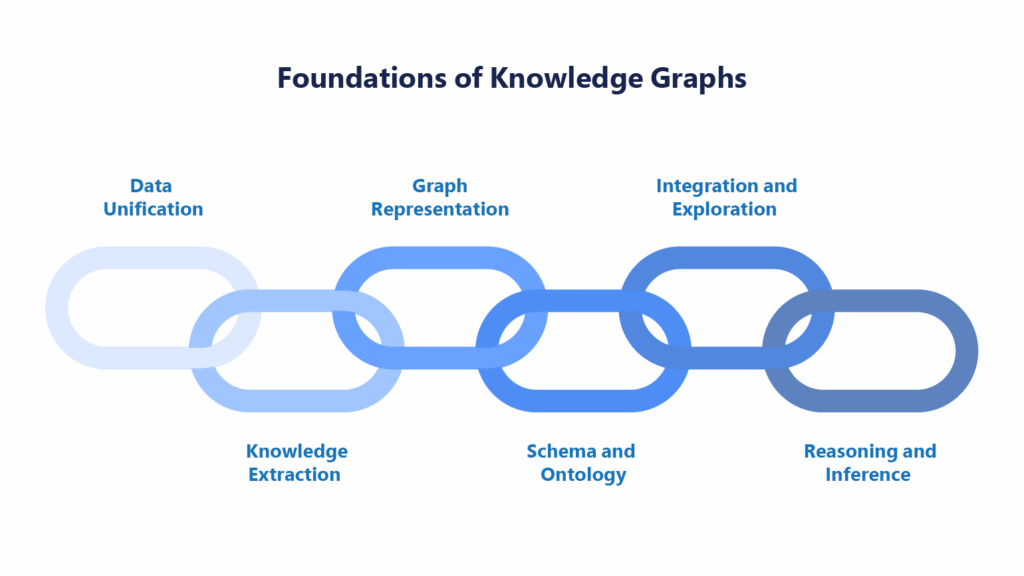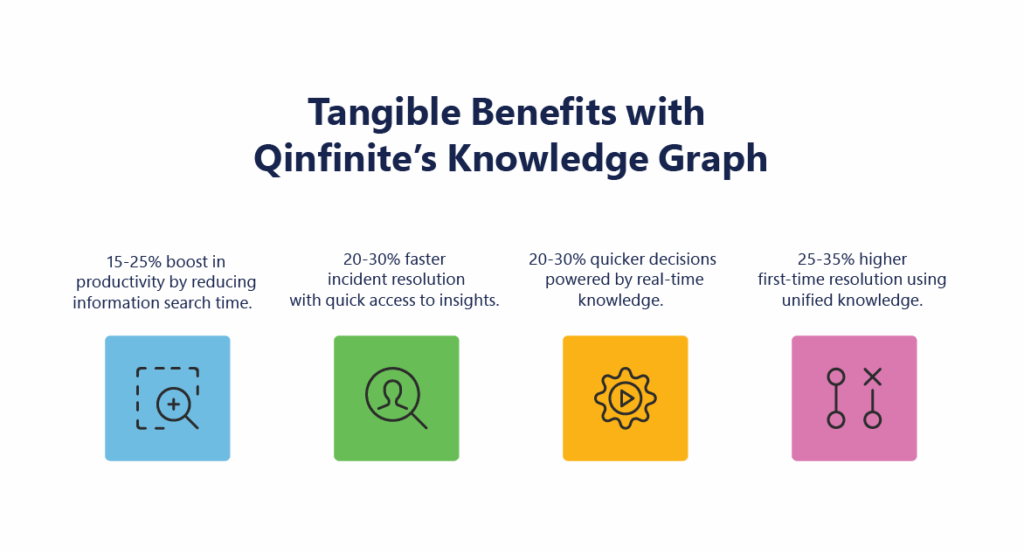Accelerate IT operations with AI-driven Automation
Automation in IT operations enable agility, resilience, and operational excellence, paving the way for organizations to adapt swiftly to changing environments, deliver superior services, and achieve sustainable success in today's dynamic digital landscape.
Driving Innovation with Next-gen Application Management
Next-generation application management fueled by AIOps is revolutionizing how organizations monitor performance, modernize applications, and manage the entire application lifecycle.
AI-powered Analytics: Transforming Data into Actionable Insights
AIOps and analytics foster a culture of continuous improvement by providing organizations with actionable intelligence to optimize workflows, enhance service quality, and align IT operations with business goals.
The future belongs to those who master data—not just collect it.
In today’s data-dense, insight-scarce business environment, the real challenge isn’t access to data—it’s understanding it in context. Organizations are generating more data than ever before, but according to Forrester, on average, between 60% to 73% of all data within an enterprise goes unused for analytics—trapped in silos, buried in outdated systems, and invisible to decision-makers.
This is where the benefits of Knowledge Graphs come into play, transforming how businesses interact with data. By weaving every data entity (people, processes, applications, assets) into a living, semantic network, Knowledge Graphs let both AI systems and humans ask a graph “how” and “why” things connect—and get answers in near‑real‑time.
A recent survey found that 48% of M&A professionals are now using AI in their due diligence processes, a substantial increase from just 20% in 2018, highlighting the growing recognition of AI’s potential to transform M&A practices.

As companies shift from being merely data-driven to truly intelligence-driven, the advantages of a knowledge graph become undeniable. Knowledge Graphs are no longer just tools—they’re the foundation of digital enterprise strategy. Miss out, and you risk falling behind.
Let’s dive into the benefits of Knowledge Graphs—why forward-looking organizations are adopting them, and why you should too.
Here’s What You Gain with Knowledge Graphs: The Top 7 Key Benefits
An AI Proof of Concept (PoC) is a small-scale, experimental project that helps businesses validate whether an AI solution can achieve specific objectives before full-scale implementation.
1. From Chaos to Clarity: Integrating Disparate Data Sources
One of the biggest challenges enterprises faces is data sprawl. From CRMs to cloud platforms and IoT devices, valuable data is scattered across multiple systems, stored in incompatible formats, and governed by different teams.
According to a Harvard Business Review survey, 84% of executives report suffering from the negative effects of data silos.
One of the key advantages of a knowledge graph is its ability to connect structured and unstructured data through a unified, semantic layer. Knowledge Graphs bridge these gaps by connecting entities—like customers, transactions, or applications—into an interconnected, understandable network, uncovering previously invisible relationships.
2. Decode the ‘Why’: Deep Contextual Understanding
Understanding that two things are linked is useful. Understanding how and why they’re connected? That’s game changing.
Knowledge Graphs provide this contextual understanding by mapping real-world relationships and business logic. They represent not just data but the meaning behind it—helping both machines and humans interpret the “why” behind trends and events.
This is crucial for:
-
- Identifying root causes of issues
- Anticipating downstream impact
- Making accurate predictions.
According to recent industry reports, bad data costs U.S. companies over $3.1 trillion annually—often due to lack of context, duplication, and poor lineage.
3. Accelerating Data Discovery: From Hours to Minutes
Traditional data discovery involves hours of querying. With Knowledge Graphs, users can traverse relationships in real time—cutting discovery from hours to minutes.
A Forbes study shows that data scientists spend 70% of their time just preparing and discovering data—leaving little room for value creation. Knowledge Graphs unlock faster answers for both technical and business teams.
Use Case: Intelligent application management platform like Qinfinite, graph traversal helps identify incident root causes and their impact chains, speeding up resolution by up to 80% MTTR.
4. Drive Decisions That Drive Results
Great decisions require more than dashboards—they require ecosystem awareness.
Leaders often make decisions based on outdated or isolated reports, without understanding broader implications. Knowledge Graphs provide a holistic view of systems, dependencies, and business impact, enabling data-driven decisions across IT operations, customer service, and product development.
When AI agents or human analysts make decisions based on a graph, they consider not just isolated metrics but the full ecosystem—leading to smarter, more strategic outcomes.

5. Innovate at Speed: Fuel R&D with Hidden Connections
In industries like pharmaceuticals, manufacturing, and software, true innovation hinges on the ability to connect the dots—linking past research, experimental outcomes, market demands, and emerging trends.
Knowledge Graphs streamline this process by uncovering hidden relationships, accelerating feedback loops, and dramatically reducing the time it takes to bring new products to market.
Case in point: Researchers at Oxford’s Drug Discovery Institute used AI-powered Knowledge Graphs to cut Alzheimer’s drug candidate evaluation time from weeks to just days, as reported by The Wall Street Journal.
6. Take Control: Simplify Data Governance and Compliance
For industries bound by regulation, transparency is vital. The advantages of a knowledge graph include built-in lineage tracking, relationship mapping, and logical access flows—making it easier to meet standards like GDPR, HIPAA, and SOC 2.
Knowledge Graphs turn compliance from a checklist into a strategic advantage, reducing risk and enabling ethical data handling.
Think of it as compliance with context.
7. Stop Searching, Start Knowing: Smarter Knowledge Management
In large organizations, valuable information often gets buried in documents, emails, and databases. According to McKinsey Research, employees spend up to 1.8 hours per day—nearly 9.3 hours per week—just searching for information.
Knowledge Graphs facilitate efficient knowledge management by organizing information in an easily navigable structure. Employees can quickly access relevant data, documents, and expertise, boosting productivity and fostering innovation.
Use Case: Healthcare companies use Knowledge Graphs to link clinical data, research papers, and patient records—accelerating diagnostics and improving patient care.
Beyond the Basics: How Qinfinite Elevates Knowledge Graphs in the Enterprise
A major highlight from the highly anticipated report, “2025 and Beyond: Redefining Business with Intelligent Application Management (iAM),” is how our intelligent application management platform, Qinfinite is pushing the boundaries of what Knowledge Graphs can do. The report calls Knowledge Graphs the “continuous insight layer” powering intelligent, self-healing digital ecosystems.
Here’s how Qinfinite, takes Knowledge Graphs to the next level:
- Real-time discovery of applications, interfaces, and dependencies across hybrid, multi-cloud environments
- Integration with Digital Twins, simulating changes and predicting outcomes before deployment
- Graph-enabled GenAI, allowing users to “talk to their data” through natural language via QinfiniteGPT
- Context-aware AI agents that use the graph to automate root-cause analysis, change impact prediction, and intelligent ticket routing
- Compliance-first architecture with data masking, secure access, and audit trails baked into the graph

Download the full report here to explore how Qinfinite is redefining enterprise automation through continuous graph-powered insight
Closing Thoughts: Empower Your Enterprise with Graph-Powered Intelligence Why AI PoCs Matter?
In the race to intelligent transformation, Knowledge Graphs are your enterprise’s secret weapon—converting chaos into clarity, silos into stories, and data into decisions.
But insight alone isn’t enough. You need a platform that activates that insight at scale, in real time. And Qinfinite isn’t just using graphs—it’s redefining enterprise application management through continuous insight, AI agents, and intelligent automation that learns, evolves, and scales with your business.
So, are you ready to break free from data silos, accelerate digital transformation, and lead your organization into an intelligence-driven future?
Schedule your free consultation with our experts today!
|
|
With iAM, every application becomes a node within a larger, interconnected system. The “intelligent” part isn’t merely about using AI to automate processes but about leveraging data insights to understand, predict, and improve the entire ecosystem’s functionality.
Consider the practical applications:
In the Infinite Game of application management, you can’t rely on tools designed for finite goals. You need a platform that understands the ongoing nature of application management and compounds value over time. Qinfinite is that platform that has helped businesses achieve some great success numbers as listed below:

1. Auto Discovery and Topology Mapping:
Qinfinite’s Auto Discovery continuously scans and maps your entire enterprise IT landscape, building a real-time topology of systems, applications, and their dependencies across business and IT domains. This rich understanding of the environment is captured in a Knowledge Graph, which serves as the foundation for making sense of observability data by providing vital context about upstream and downstream impacts.
2. Deep Data Analysis for Actionable Insights:
Qinfinite’s Deep Data Analysis goes beyond simply aggregating observability data. Using sophisticated AI/ML algorithms, it analyzes metrics, logs, traces, and events to detect patterns, anomalies, and correlations. By correlating this telemetry data with the Knowledge Graph, Qinfinite provides actionable insights into how incidents affect not only individual systems but also business outcomes. For example, it can pinpoint how an issue in one microservice may ripple through to other systems or impact critical business services.
3. Intelligent Incident Management: Turning Insights into Actions:
Qinfinite’s Intelligent Incident Management takes observability a step further by converting these actionable insights into automated actions. Once Deep Data Analysis surfaces insights and potential root causes, the platform offers AI-driven recommendations for remediation. But it doesn’t stop there, Qinfinite can automate the entire remediation process. From restarting services to adjusting resource allocations or reconfiguring infrastructure, the platform acts on insights autonomously, reducing the need for manual intervention and significantly speeding up recovery times.
By automating routine incident responses, Qinfinite not only shortens Mean Time to Resolution (MTTR) but also frees up IT teams to focus on strategic tasks, moving from reactive firefighting to proactive system optimization.
Did you know? According to a report by Forrester, companies using cloud-based testing environments have reduced their testing costs by up to 45% while improving test coverage by 30%.
FAQs Related to Knowledge Graphs
A Knowledge Graph is a data structure that organizes information into entities and their relationships, enabling machines and humans to understand the context of data. It links data points semantically, allowing real-time insights through graph-based querying.
Unlike traditional relational databases that store data in tables, Knowledge Graphs model relationships as first-class citizens—meaning they focus on how things connect. This allows for deeper context, better flexibility, and faster discovery of insights.
Yes. Knowledge Graphs enhance AI by providing contextual data, improving reasoning, and enabling explainability. AI models trained with graph-enabled data are more accurate, traceable, and robust.
Common use cases include fraud detection in banking, drug discovery in pharma, incident root-cause analysis in IT operations, intelligent search, recommendation engines, and compliance management.
Qinfinite uses AI-powered Knowledge Graphs for real-time application discovery, dependency mapping, impact analysis, and GenAI-powered natural language queries—turning enterprise data into continuous, actionable insight.
Not at all. While they deliver significant value at scale, mid-sized businesses can also benefit from Knowledge Graphs to eliminate data silos, improve decision-making, and enable smarter AI applications.
Start with a use-case-driven approach—identify a high-impact area (like incident management or compliance), choose a platform like Qinfinite, and work with data experts to build your semantic foundation.